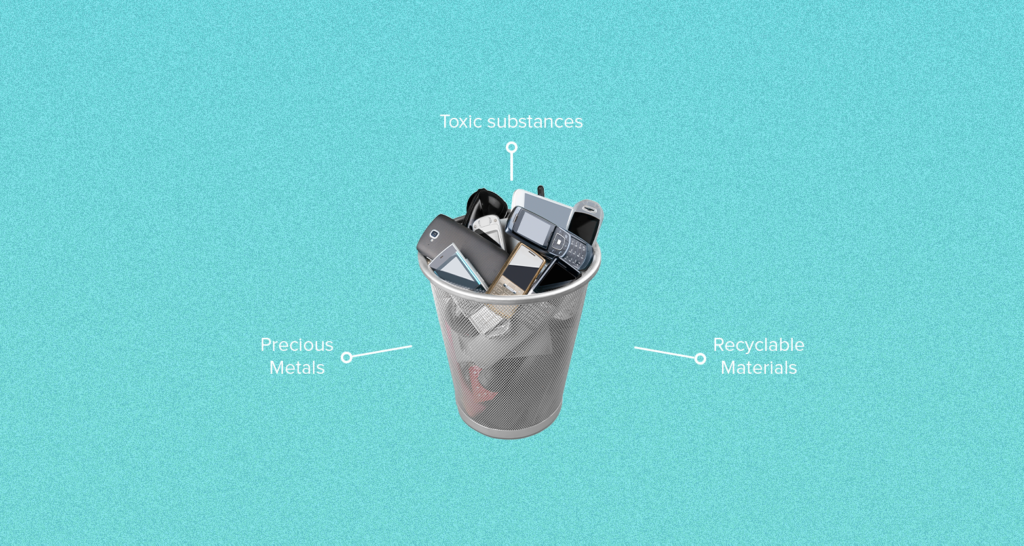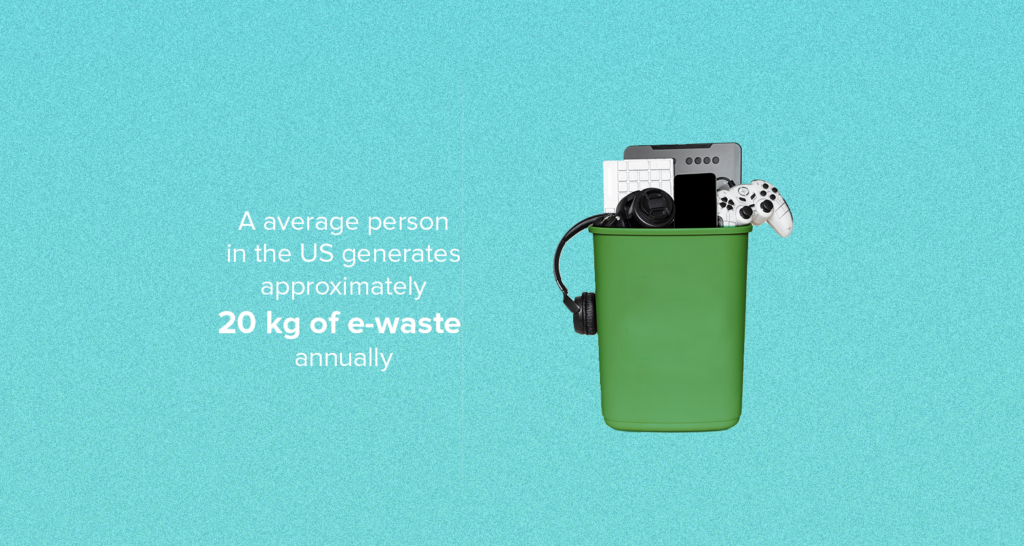Do you know that e-waste is considered the fastest-growing waste stream in the world? According to the Global E-waste Monitor Report in 2020, 53.6 million metric tons of e-waste were generated worldwide in 2019.
As technology has fueled our society, e-waste presents a rapidly-growing environmental problem. The amount of e-waste generated yearly is increasing due to higher consumption rates, shorter life cycles, and fewer repair options. Oddly, the hope for a more sustainable future lies in using technology to address the e-waste crisis.
This article will explore the future of e-waste and the solutions to help make our electronics landscape more sustainable.
Defining E-Waste
E-waste (Electronic Waste) refers to discarded electronic products. These products may be no longer in use, not functioning, outdated, and approaching or have reached the end of their “useful lifespan.” E-waste includes anything from consumer electronics like smartphones and laptops to industrial electronics like electric vehicle batteries and solar panels.

The Environmental, Economic, and Social Impacts of E-Waste
The improper disposal of e-waste has significant environmental, economic, and social implications. E-waste contributes to carbon emissions, and improper disposal means throwing away valuable resources.
Environmental Impacts
- Climate change: the production and disposal of electronics contribute to climate change through greenhouse gas emissions.
- Water and soil pollution: improperly discarded e-waste also leads to soil and water pollution due to toxic substances like lead and mercury in devices.
- Resource depletion: nearly all electronic devices contain precious metals in trace quantities. Since precious and rare earth metals are scarce, not recycling these products can lead to resource depletion.
Economic Impacts
- The increased cost of healthcare: the environmental impact of e-waste can lead to health issues like congenital disabilities, respiratory problems, and neurological disorders, leading to increased healthcare costs.
- Loss of valuable resources: improper disposal leads to a loss of valuable resources, resulting in low supply and higher costs.
Social Impacts
- Human rights violation: e-waste is often shipped to developing countries where it is processed under hazardous working conditions. Workers are routinely exposed to toxins, and many human rights, such as forced and child labor, are violated.
- Disproportionate distribution of waste: low-income communities and communities of color are often unjustly exposed to e-waste, as most waste management facilities are near these communities.

Managing E-Waste
Following the waste management hierarchy, here are ways to properly manage electronic waste.
Reduce
The best way to minimize e-waste is by re-evaluating your decision to upgrade electronics. Before making a purchase, ask yourself if you truly need to upgrade. Additionally, buy products with a longer lifespan and multiple functions. Leading a minimalist lifestyle can help you leave a smaller carbon footprint.
Reuse
If you can’t avoid purchasing new electronics, consider donating or selling your old devices. If they’re still functional and in good condition, you can most likely find someone who needs them more than you do. The Environmental Protection Agency (EPA) has also issued a guide on electronics donation and recycling.
Recycle
Electronics recycling is an excellent way to avoid contamination and conserve valuable resources. However, it’s a complex and expensive process; in 2019, only 17.4% of e-waste was collected and recycled.
What makes this process complex is the nearly 60 elements from the periodic table that are present in the e-waste stream, including hazardous materials. Products that include various materials are generally difficult or impossible to recycle. And there still needs to be more knowledge and understanding about handling e-waste. Not only should e-waste be appropriately sorted, but the different streams must be dealt with individually.
Electronics include gold, silver, copper, platinum, and other high-value raw materials. When we dump or burn electronics instead of recycling or reusing them, we’re wasting valuable resources. We can recover 35 thousand pounds of copper, 772 pounds of silver, 75 pounds of gold, and 33 pounds of palladium for every million recycled cell phones.
Safely Dispose
Discarding tech is still sometimes unavoidable, and if that’s the case, we must ensure the safe disposal of devices. Generally, governments and local communities provide guidelines on safe waste disposal for electronics.
EPR – Extended Producer Responsibility for Waste Reduction
EPR is a protection strategy aiming to reduce the environmental impact of a product and its packaging. It considers all estimated ecological costs associated with a product and requires producers to take responsibility for the entire product lifecycle. Container-take-back programs are one example of EPR, where consumers generally pay a small extra fee when purchasing a product that is refunded when they return the container to the retailer. Asking the industry to take back products at the end of a product’s life encourages it to design products to enhance their reusability. It also incentivizes the development of designs that boost recyclability and minimizes the impact of products that could otherwise remain in and pollute the waste stream. EPR programs are becoming more and more established throughout the world and will help ensure industry accountability.

The Role of AI and Technology in the Future of E-Waste
An average person in the United States generates approximately 20 kg of e-waste annually. New York City alone generates nearly 14 million tons of e-waste each year. Now, more than ever, we need an efficient system to deal with e-waste.
Electronics recycling becomes much easier and more efficient with a well-sorted waste stream. Researchers think AI and machine learning can help significantly with recycling these products. AI and ML algorithms are training and improving by the day, and they work with up to 90% accuracy in identifying electronics.
Innovative tech startups are also creating solutions to recover, recycle and reuse the core components of technologies. Solarcycle, for example, is one company looking to solve the climate tech waste problem. Launched last year in Oakland, California, it has since constructed a recycling facility in Texas where it extracts 95% of the materials from end-of-life solar panels and reintroduces them into the supply chain.
In a world where technology becomes obsolete within months, it’s no wonder we have an e-waste crisis. We must drastically change our electronics habits, hold the industry accountable for their products, and support innovation to sustainably manage e-waste now and in the future.

